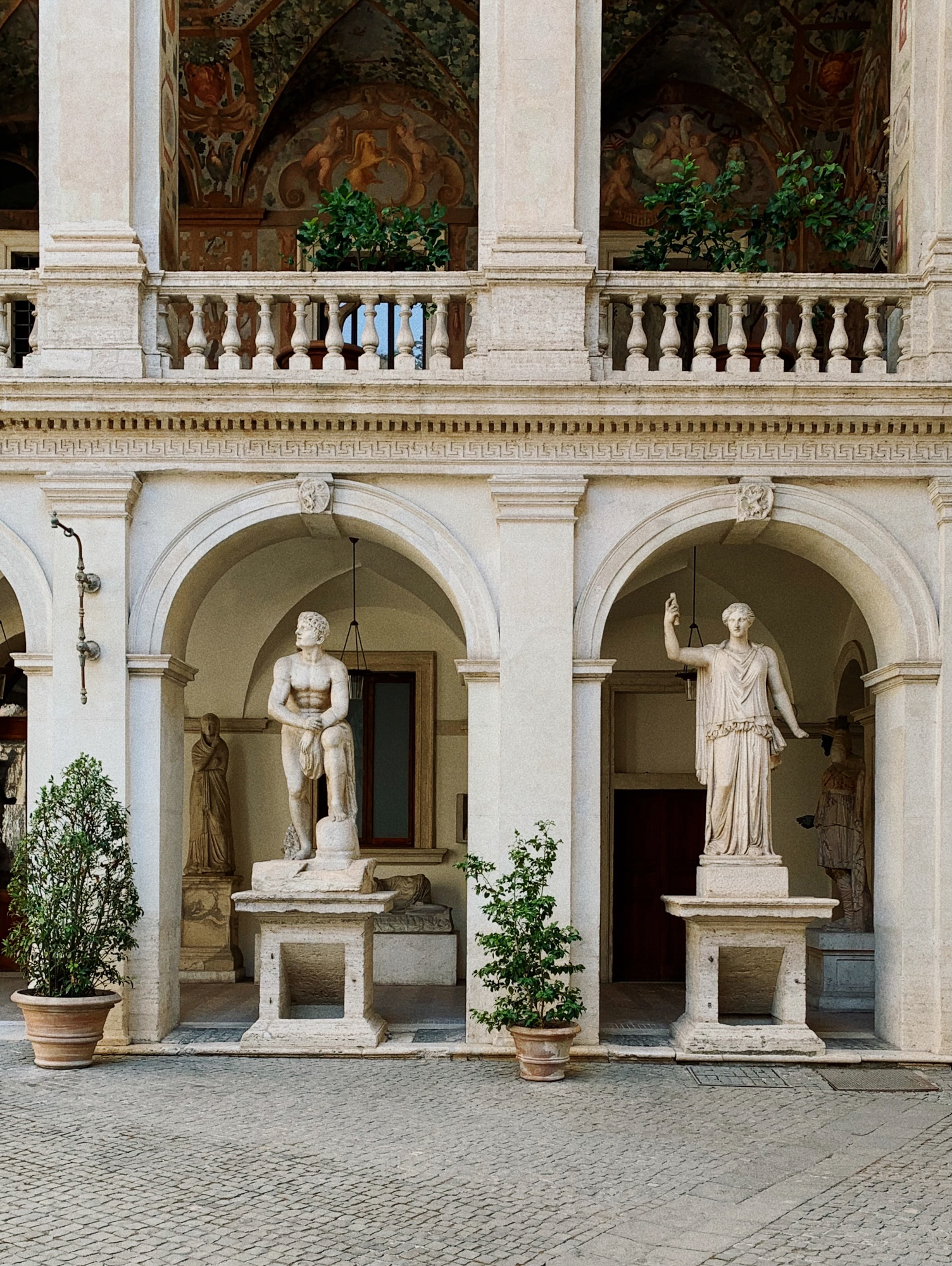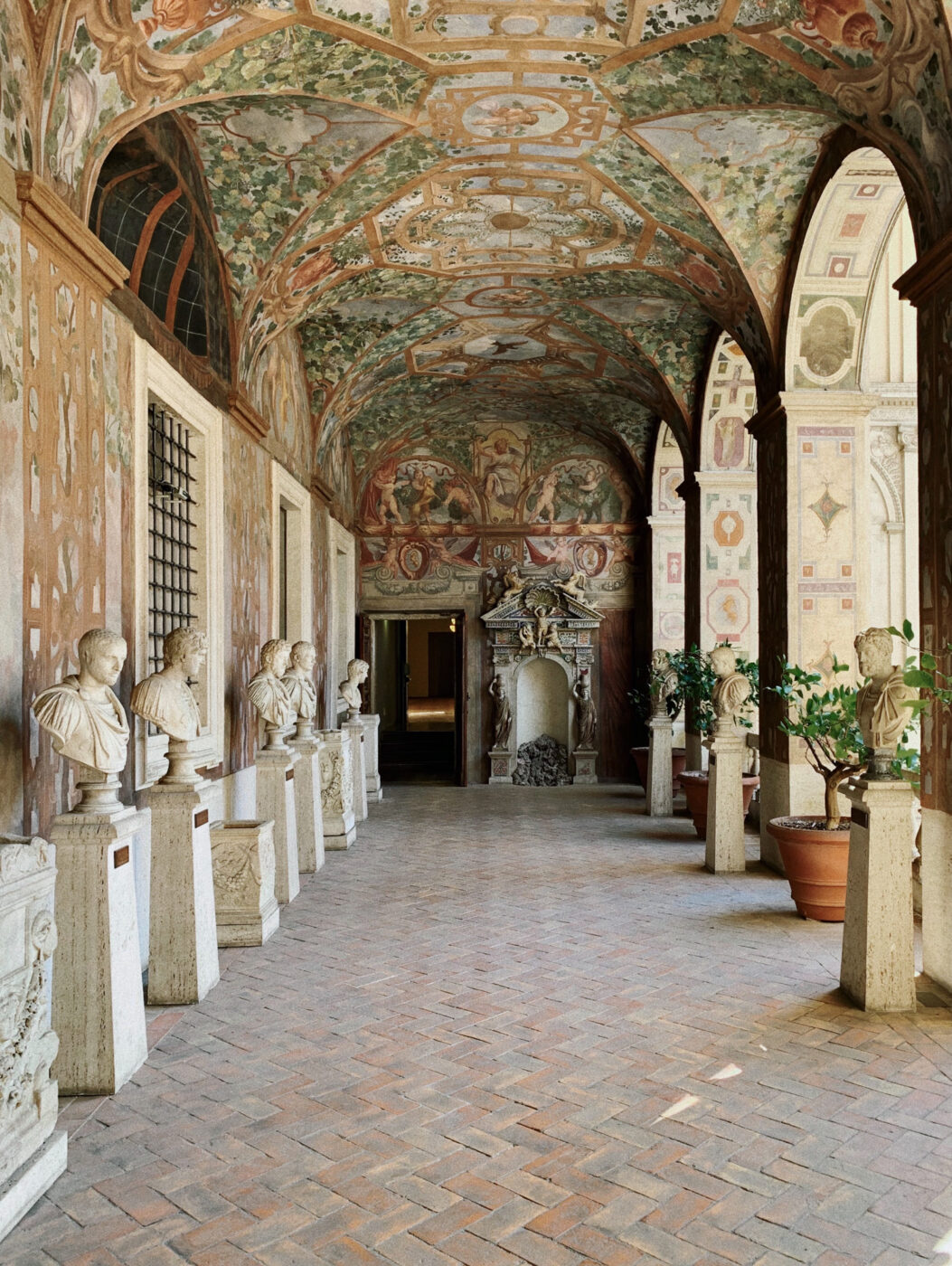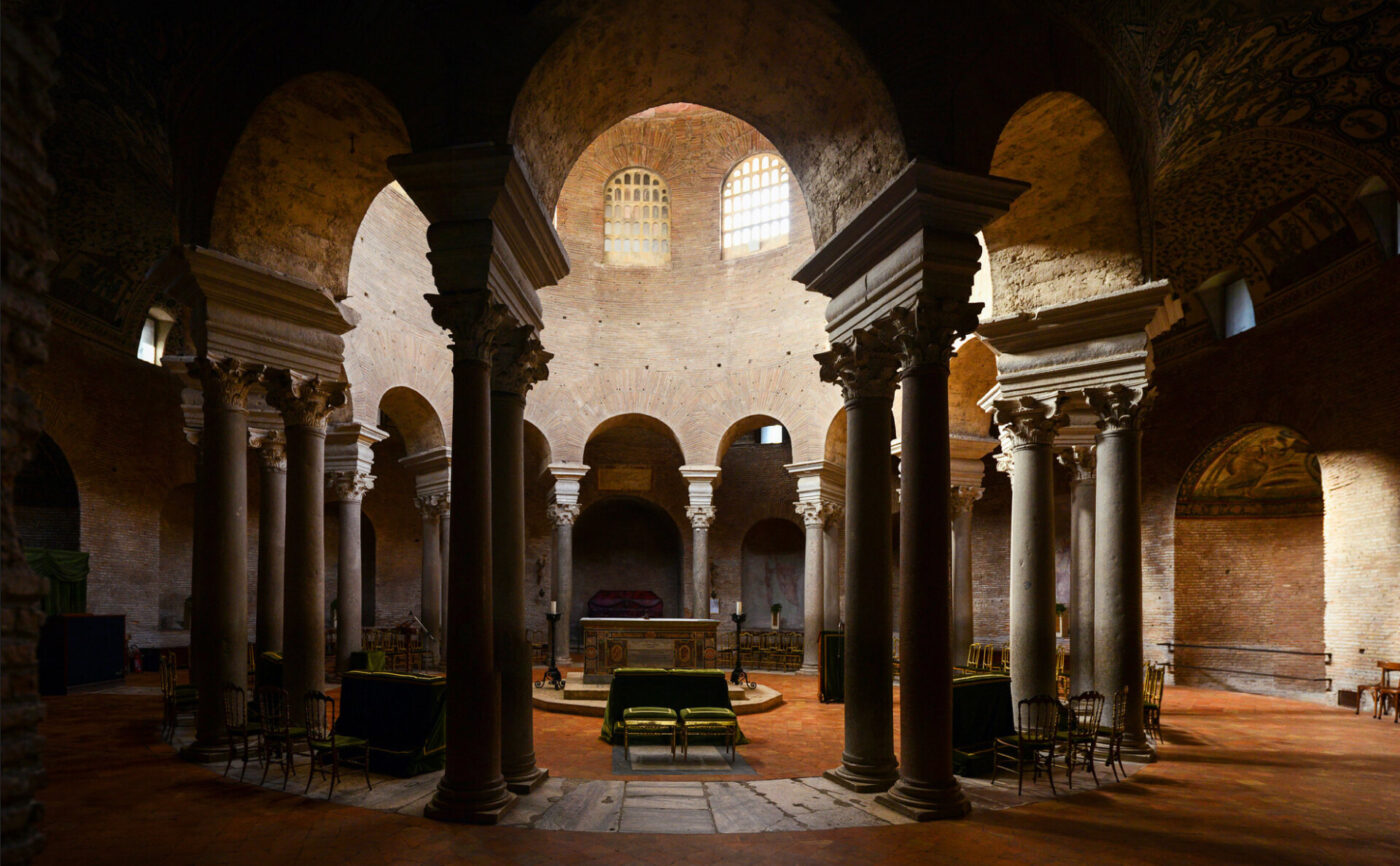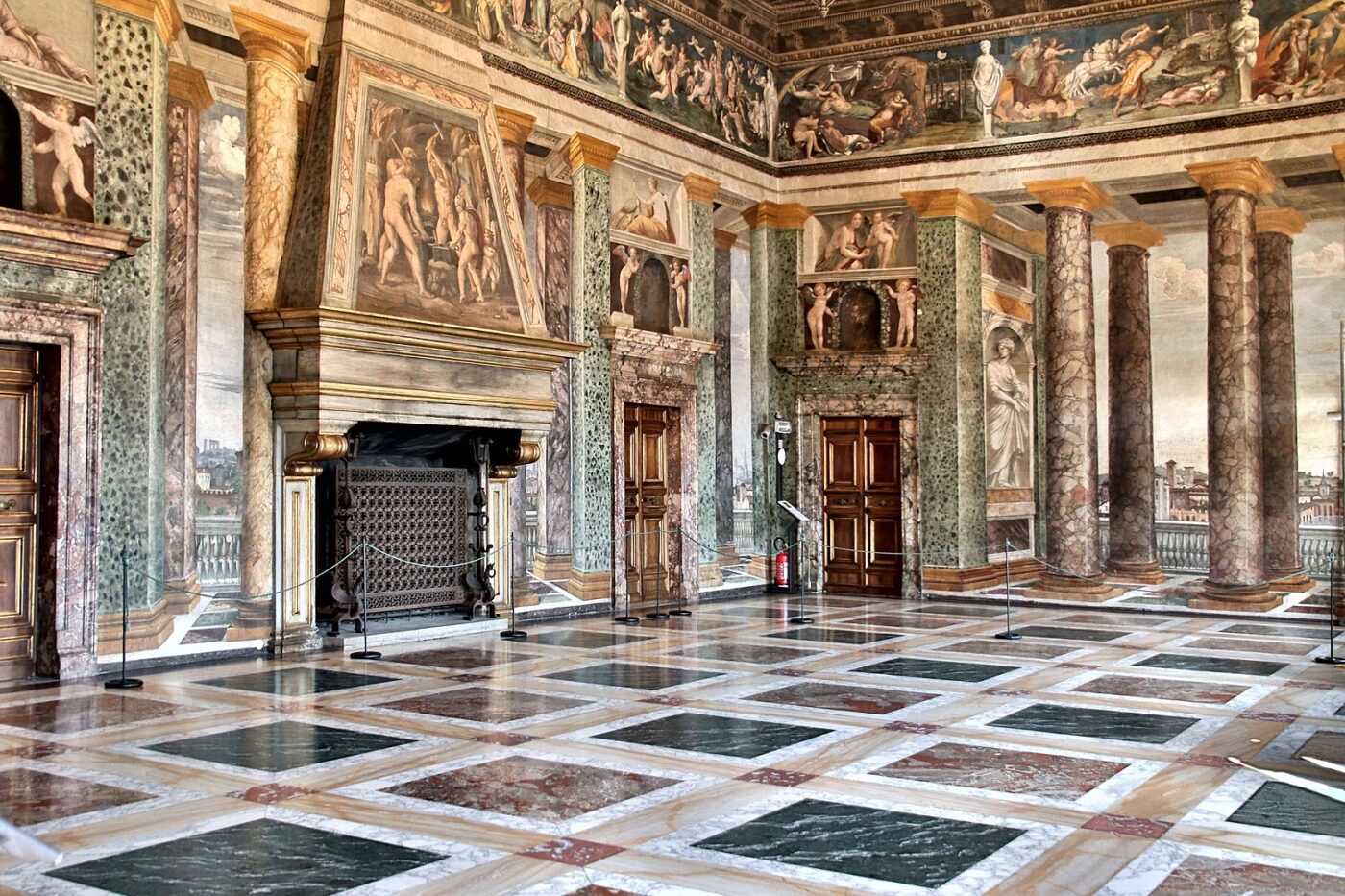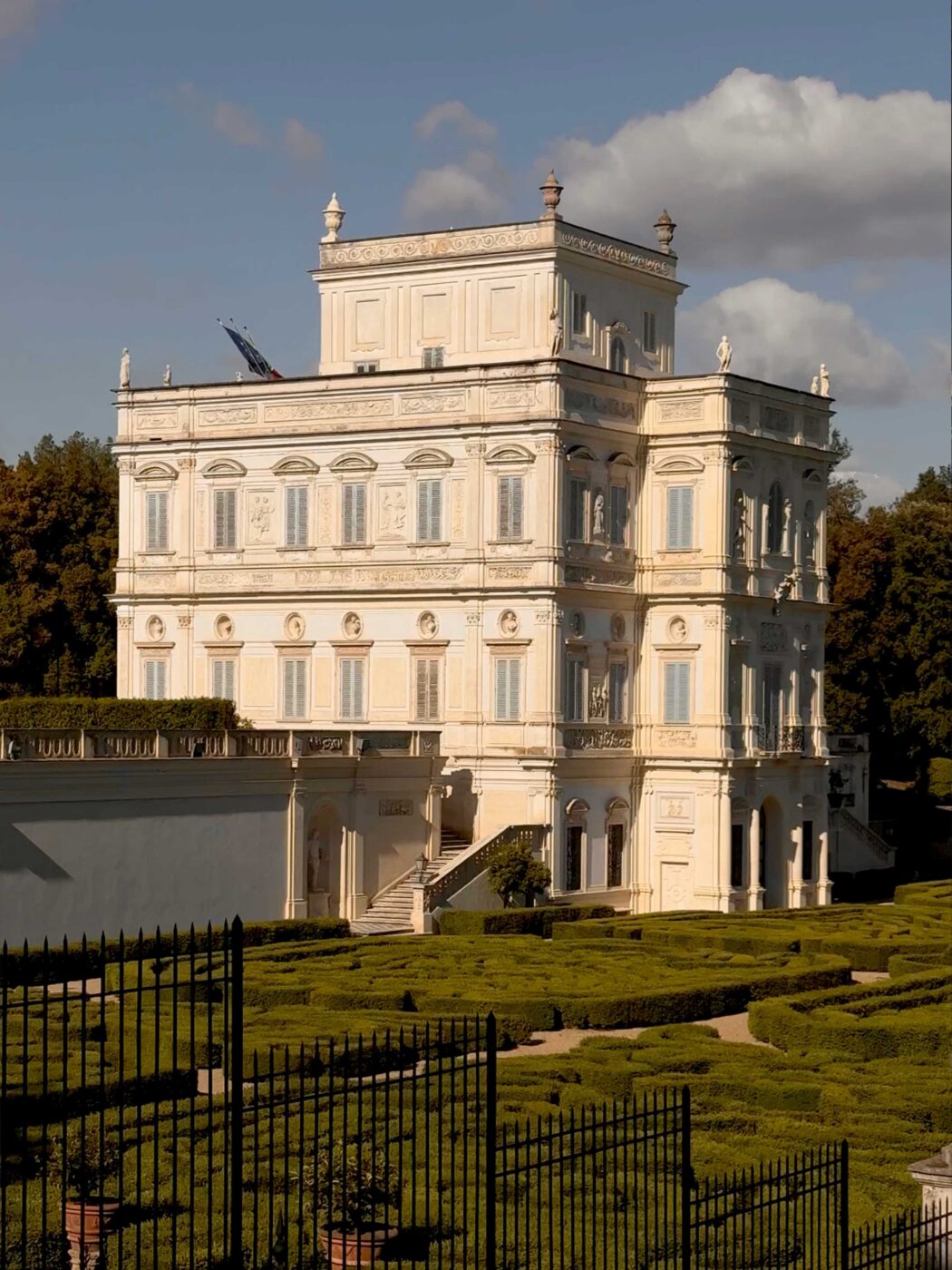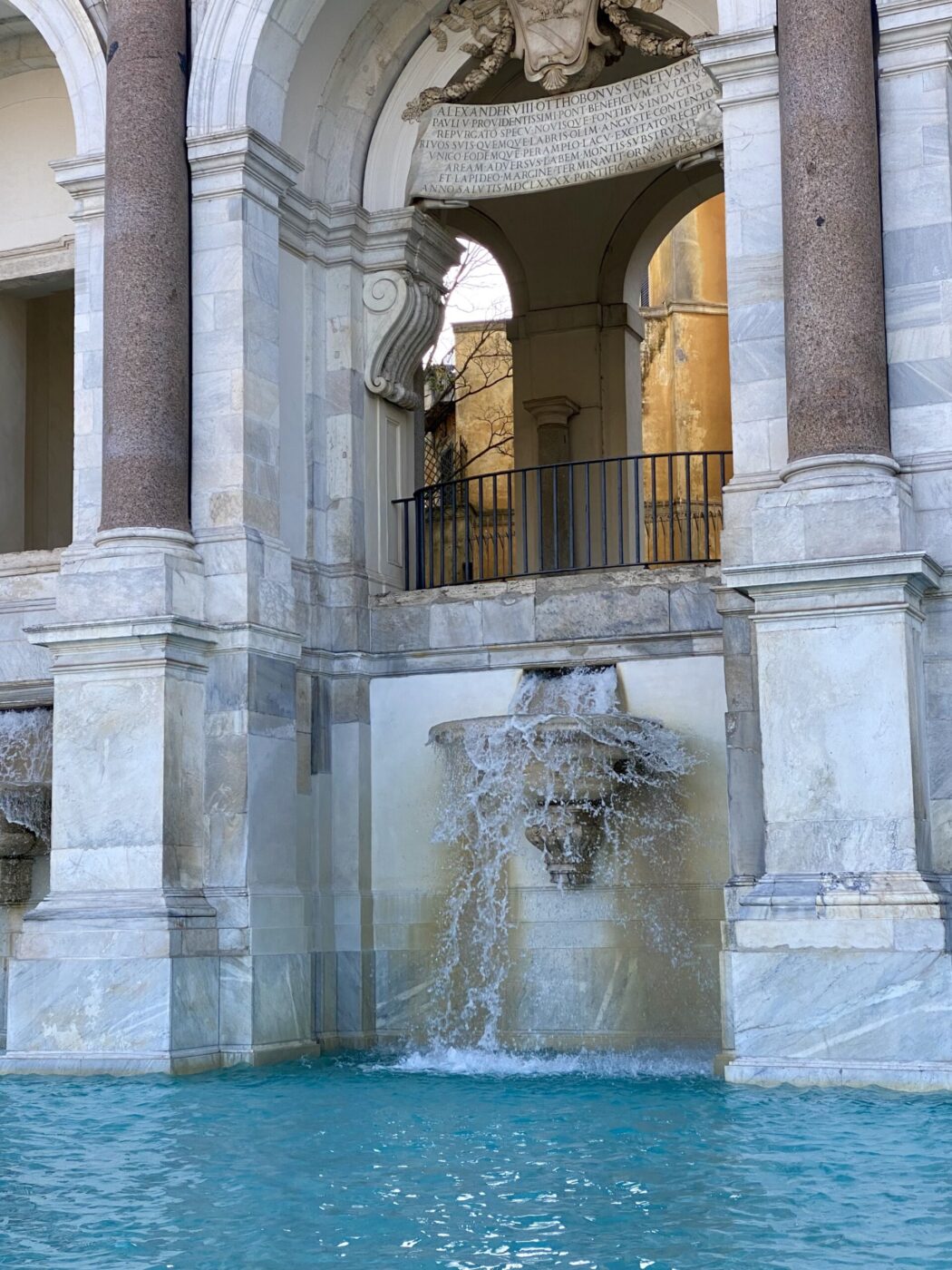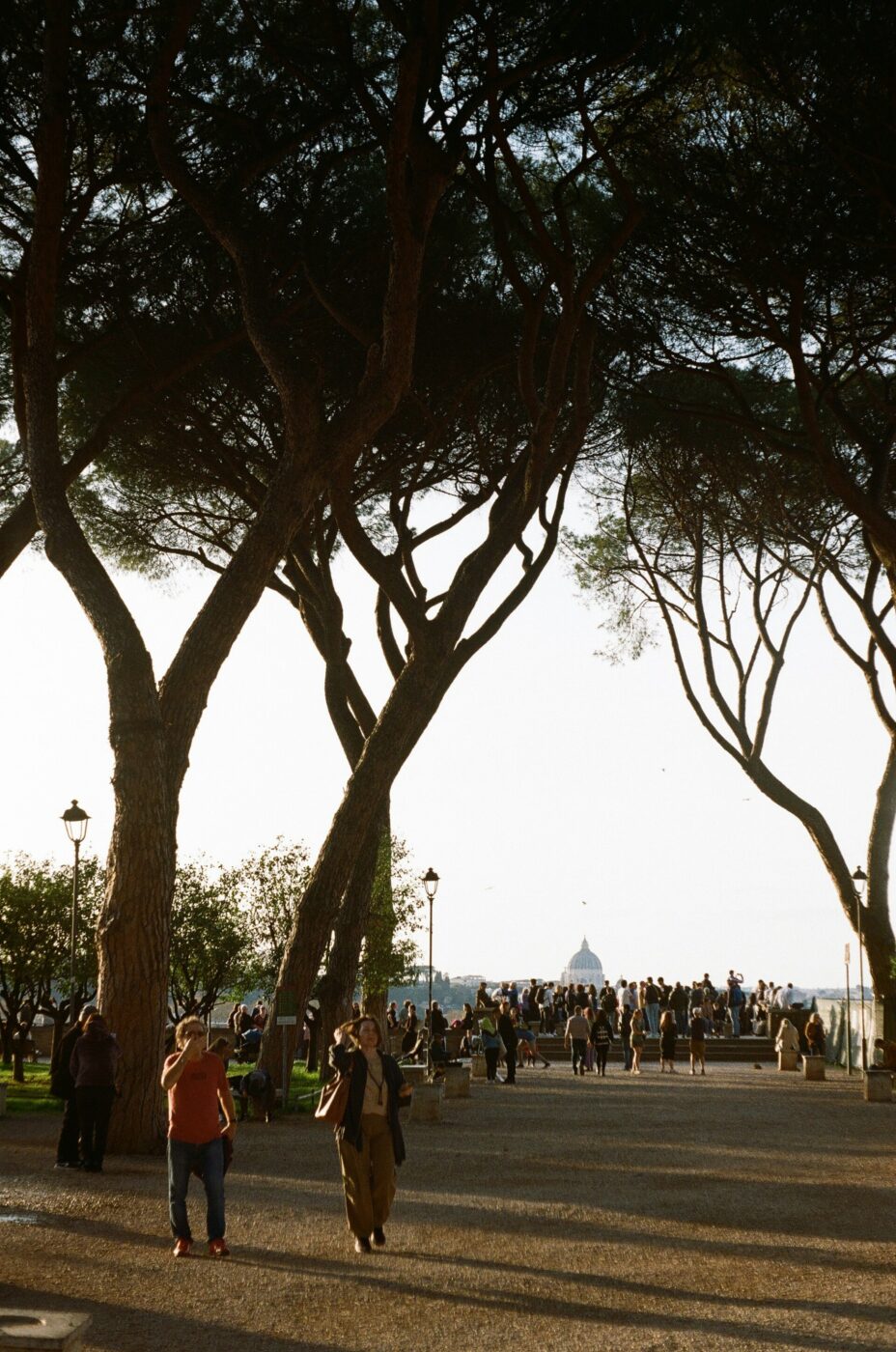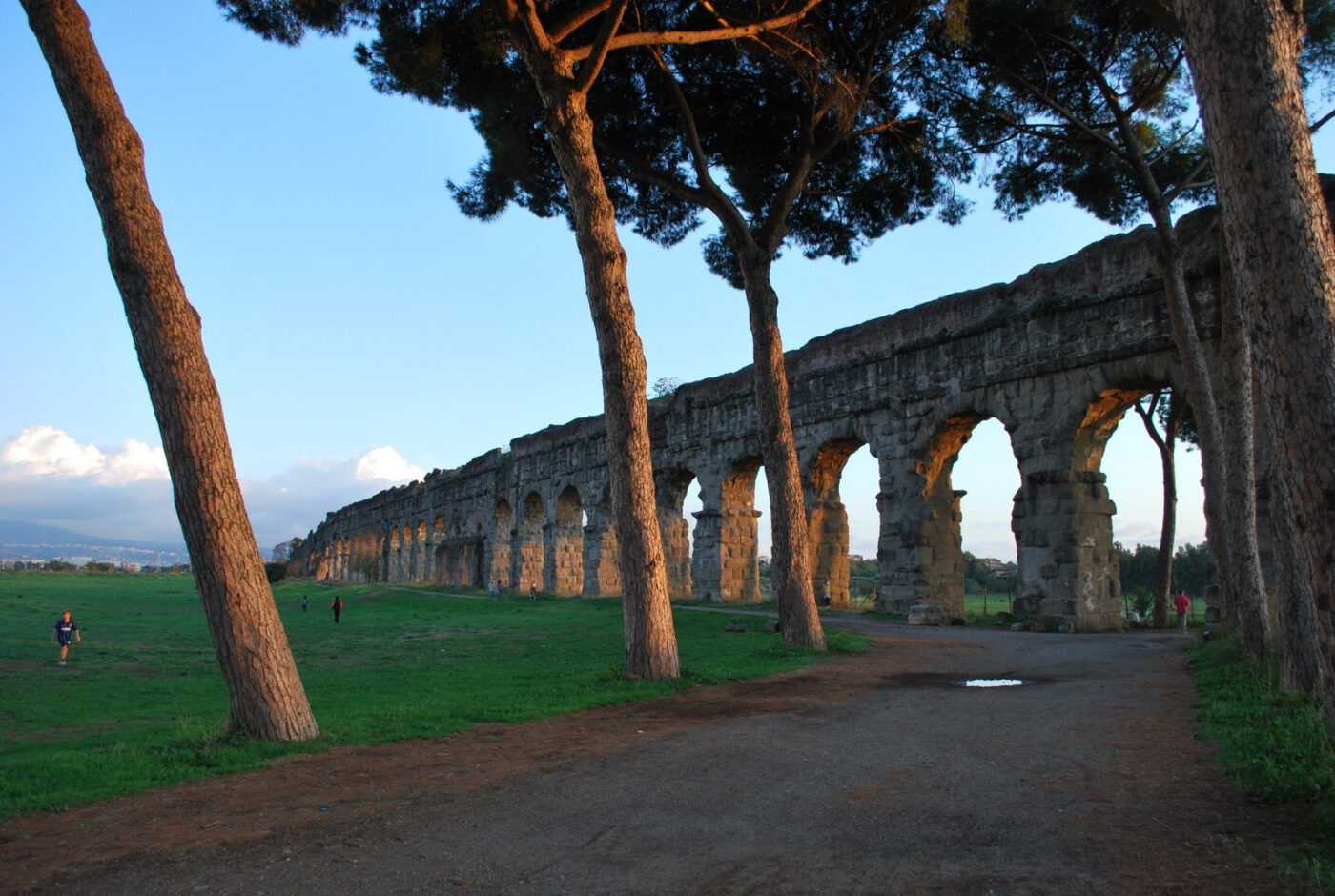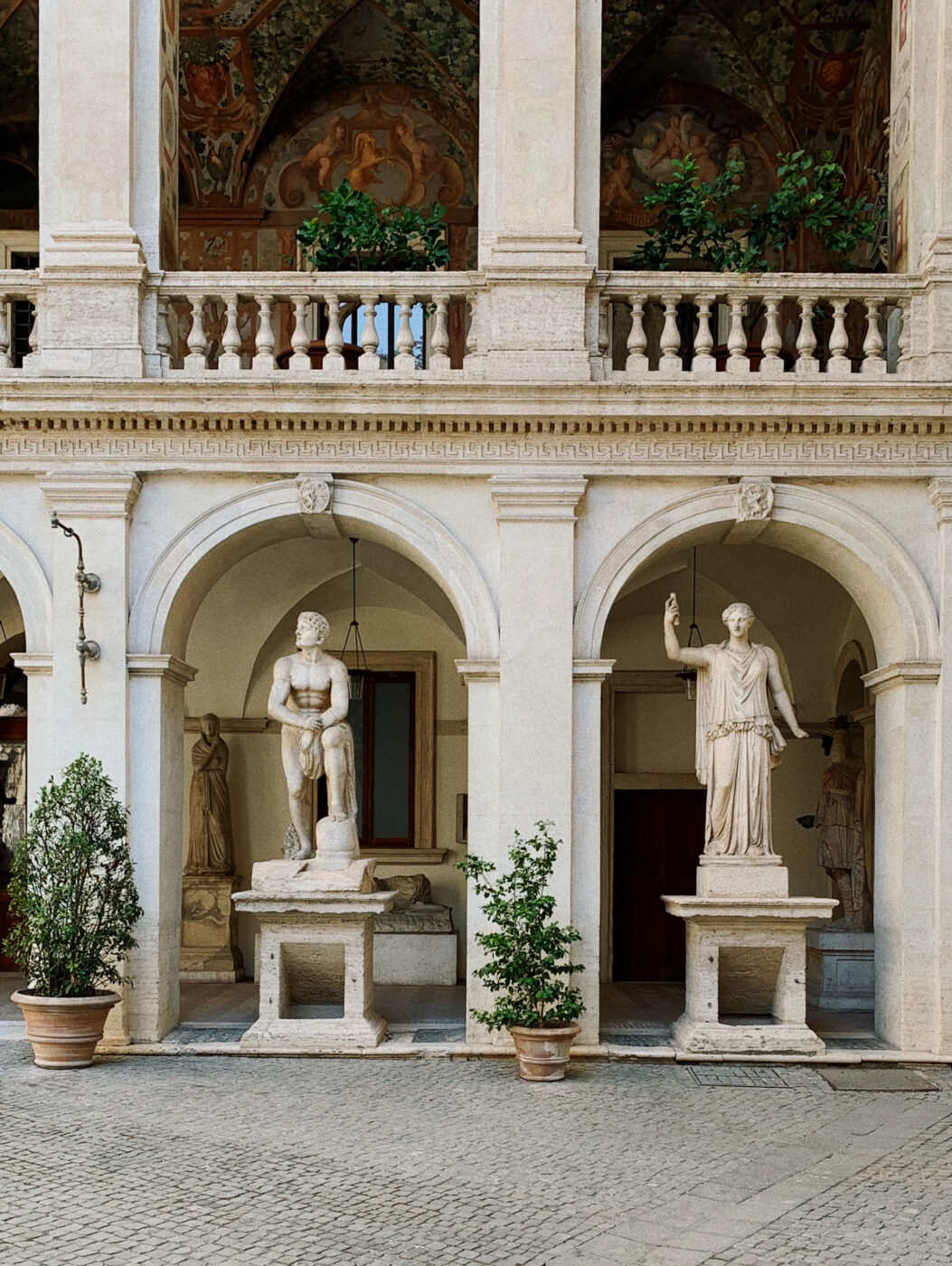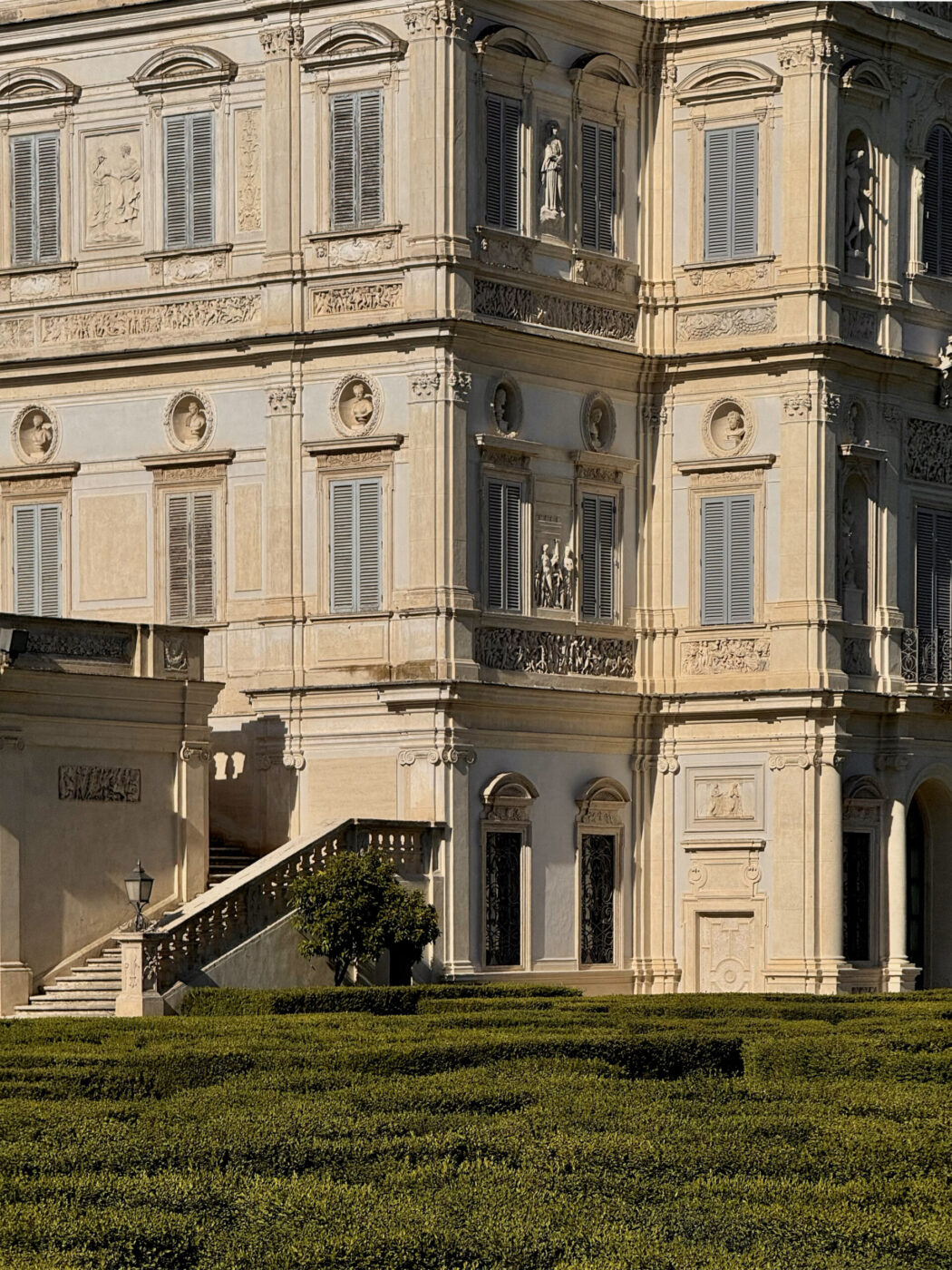Rome is celebrating its Jubilee this year, as it does every quarter-century as a Holy Year for the Catholic Church. At the beginning of the calendar year, the city was expecting more than 30 million visitors (a more than double amount compared to 2023’s 13 million), and the death of Pope Francis in April and subsequent election of Pope Leo XIV have inspired an even greater swell of travelers—most of whom are flocking primarily to St. Peter’s and the Vatican museums.
In any given year, though, it’s no secret that Rome’s visitors are led to the usual guidebook-ish agenda that includes the Colosseum, Roman Forum, Trevi Fountain, Piazza Navona, and the Vatican. But it’s worth liberating yourself from the “10 things you absolutely must do in the Eternal City” type of checklist. For every major site here, there’s 10 small fascinating ones. And for neighborhoods, think bigger than and beyond Trastevere, now flooded more by people than it ever has been by the adjacent Tiber.
Whether this is your first trip to the Eternal City, you’re a well-trodden architecture and art history fiend, or just a local who just wants a nice garden for soaking up some sun, there are countless sites in Rome waiting—begging!—for you to seek them out in all their underrated glory. This list will help make the most of your time in Rome, Jubilee year or not.
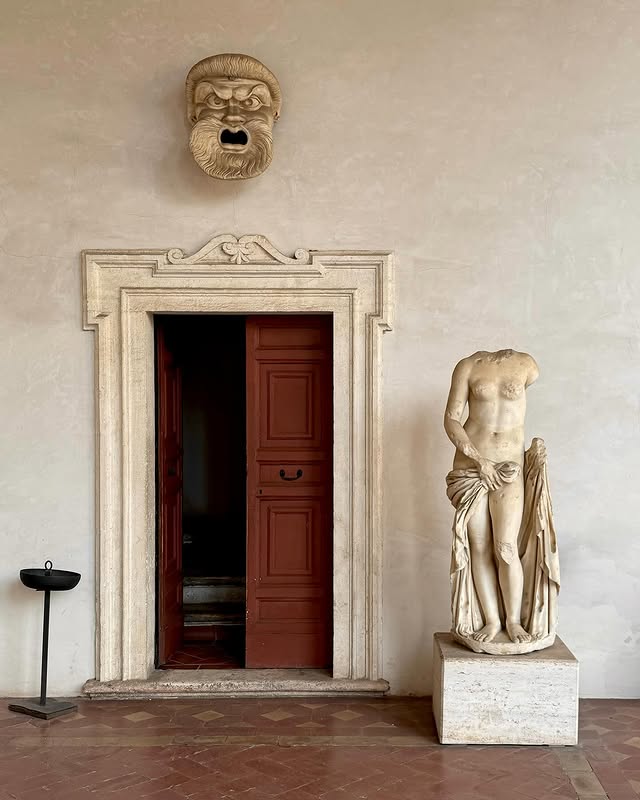
Terme di Diocleziano; Photo by Matteo Capirola
Go to the Museo Nazionale Romano, not the Vatican Museums
In the midst of all the papal goings-on this spring, the popularity of the Vatican and its artworks is as high as ever. And though it certainly has a nice collection, typically, at almost any time of day and year, the experience of moving through the galleries is more akin to being herded like cattle than it is about actually enjoying art.
Instead, for collections of ancient Roman art and sculpture that are just as rich and exemplary as the ancient works in the Vatican Museums (if not more so), head to the Museo Nazionale Romano. The museum’s four locations are like ghost towns in comparison.
The Palazzo Altemps, just above Piazza Navona, houses the museum’s top-notch classical sculptures—some of the best in the city—while the Palazzo Massimo features a vast collection of Greek and Roman sculptures. Here, you’ll find the famous bronze sculpture known as the “Defeated Boxer” or the “Boxer at Rest”, a prime example of Hellenistic sculpture from Greece (and a worthy alternative to the contemporaneous “Laocoön” sculpture in the Vatican Museums). Don’t miss the frescoes from the house of Livia, Augustus’s wife, which have been remounted here along with other domestic frescoes from the period, providing a stunningly intact view of the stately Roman home.
Across the street from the Palazzo Massimo, the Museo Nazionale’s other collection is housed in the Terme di Diocleziano, where you can view more ancient sculptures in the setting of the ancient imperial bath complex—worth admiring for its architecture as well.
Typically, the museums’ opening hours for all locations are 9:30 AM – 7 PM (last entry 6 PM), Tuesday through Sunday; check their website for the most up-to-date information. Free entry on the first Sunday of the month.
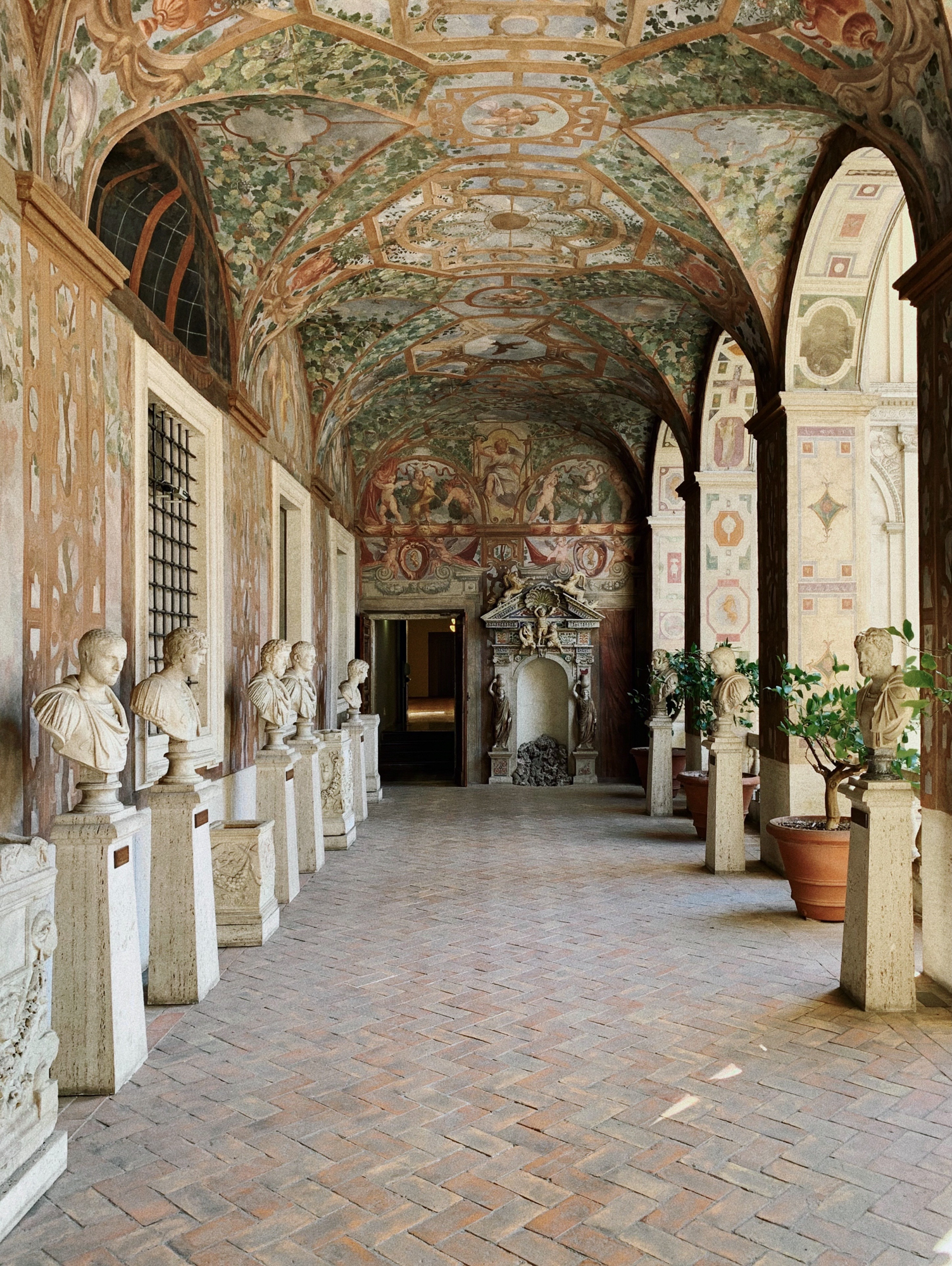
Palazzo Altemps; Photo by Giulia de Marchi
Go to Santa Costanza, not the Pantheon
The Pantheon is iconic for a reason. But these days, getting in involves a pre-booked ticket on top of waiting in line, and once you’re inside, it doesn’t get any less cramped. (By all means though, take a spin through the crowded piazza to admire the Pantheon from the outside—it’s quite impressive.)
However, if you’re willing to accept some scholars’ theory that the Pantheon was not in fact a temple dedicated to “all the gods”, but rather a space designated more for imperial, political purposes, you’ll find a better (and frankly, more inherently beautiful) example of actual religious architecture at Santa Costanza. This 4th-century church is considered an architectural “relative” or descendant of the Pantheon because of its round central plan topped with a dome, and it features mosaics that are lovely examples of early Christian decoration and iconography.
Consider it a bonus that Santa Costanza is named after a woman. Believed to have been built originally as a mausoleum for Constantine’s daughters, Constantina and Helena, it was later converted into a church and is now part of the larger complex of Sant’Agnese fuori le Mura (located immediately outside of the Metro B station Sant’Agnese/Annibaliano). Walking through Santa Costanza’s ambulatory corridor, with light streaming through the dome’s clerestory windows, is sensorily unparalleled, not to mention far calmer than the same intended experience at the Pantheon. And, after enjoying Santa Costanza, the surrounding neighborhoods of Trieste and Coppedè are nice for a walk through.
Santa Costanza is open for visits every day from 9 AM – 12 PM and 3 PM – 6 PM. Note that these hours differ from the larger complex that Santa Costanza belongs to, the church of Sant’Agnese fuori le Mura. See the website for details.
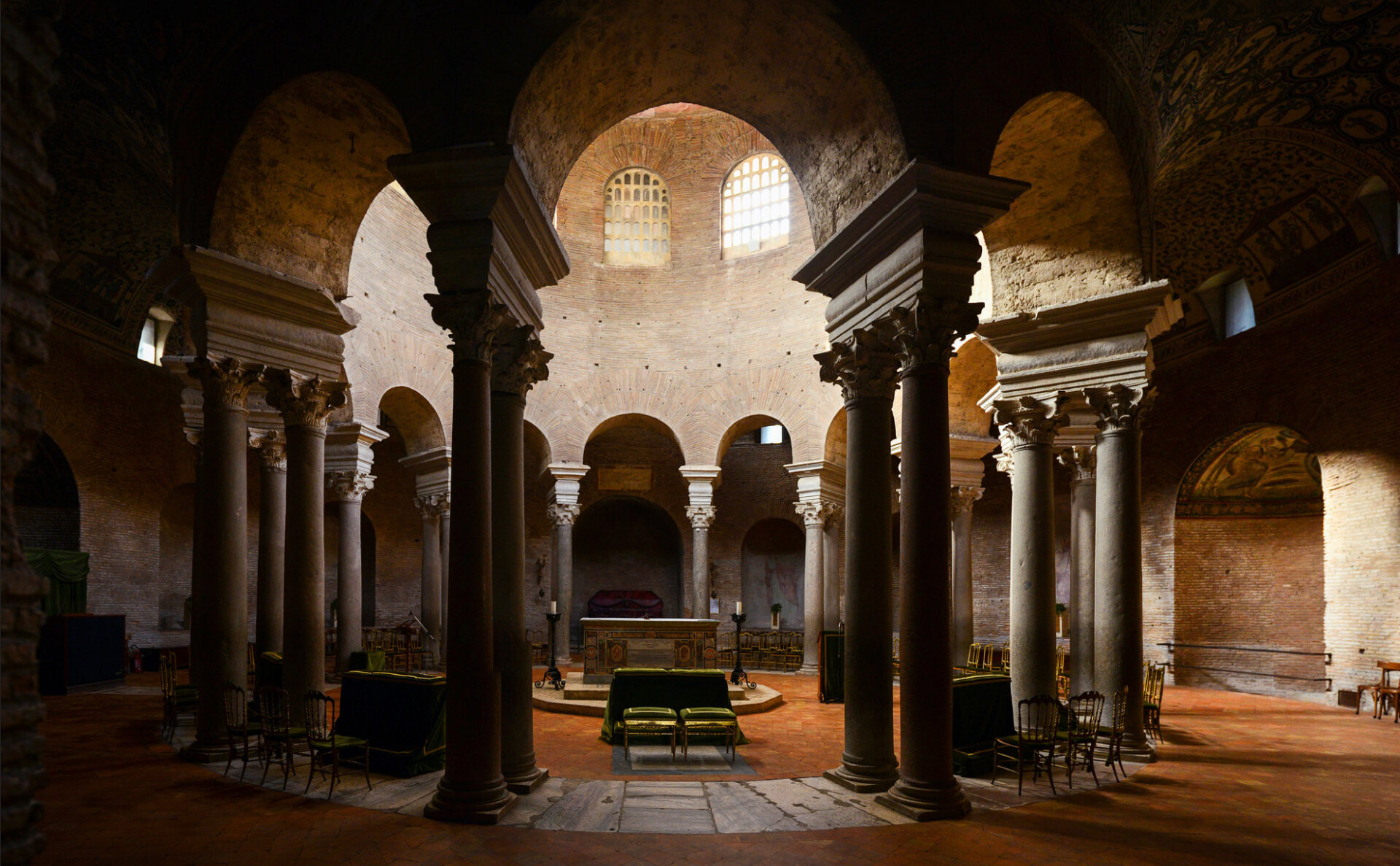
Santa Costanza
Go to the Teatro di Marcello, instead of the Colosseum
The interior of the Colosseum is worth seeing once in your life, but if you can postpone it until after 2025, all the better. In the meantime, head to the Teatro di Marcello, adjacent to the Jewish Ghetto, which could almost be mistaken for the Colosseum from the outside. Built in the first century BC under the Emperor Augustus, the Teatro di Marcello predates its twin by almost a century. All summer long, you can visit the Teatro di Marcello for a live performance—even if it’s classical music, not gladiators. Tickets to the evening concerts include a guided tour of the interior archaeological area of the Teatro before you sit and listen to lovely instrumentals against the backdrop of the illuminated arcade.
On any given day, you can walk around the ground-level arcade of the building and see the simple spaces that workshops and businesses once occupied. The teatro was converted into a family fortress in the Middle Ages, then mostly covered up in the 16th century by the construction of a new family palace directly over the structure; its ruins were finally uncovered (again) in the 1920s when the city purchased the lower section of the remaining building. It’s a prime example of how one structure has stood the test of time across Rome’s historical periods.
Aside from the concerts, the Teatro di Marcello is open every day, though remember that visits are only to the exteriors. See this website for details and here for information about the summertime classical music concerts.
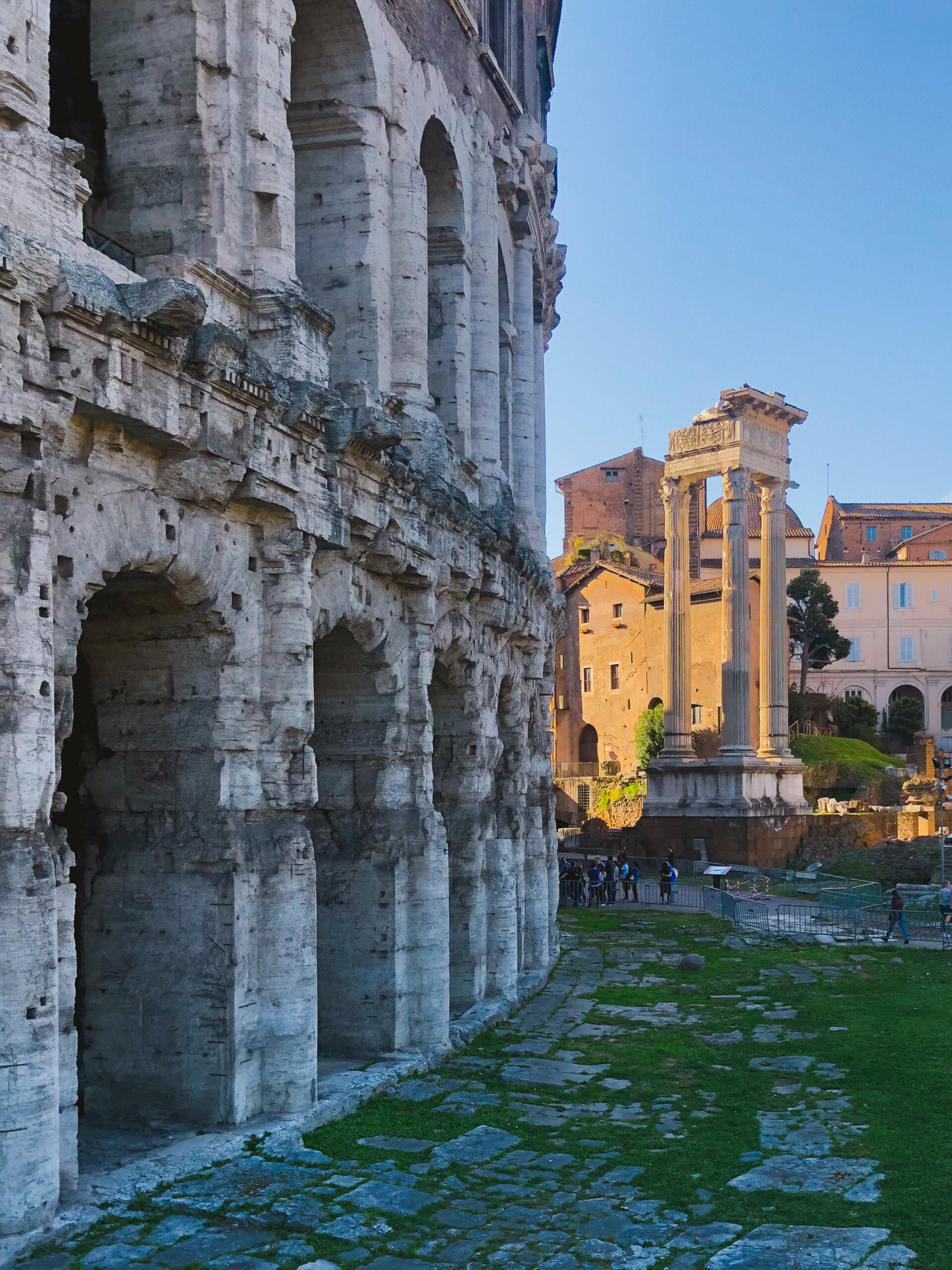
Teatro di Marcello
Go to the Villa Farnesina, not the Sistine Chapel
Again, being packed into any space, even a famous one, like sardines in a tin is by no means a travel “must.” I’m hereby releasing you from the checklist responsibility of going to the Sistine Chapel—and saving you half a day’s hours and all of your day’s energy. Whew! Now with your newfound freedom, hop over to the Villa Farnesina at the edge of Trastevere for the city’s other treasure trove of 16th-century frescoes—which are arguably prettier and more mood-lifting than Michelangelo’s painted ceiling across the river.
Raphael, Baldassare Peruzzi, and other artists decorated the interior of this Renaissance villa almost head to toe with scenes from Classical myths and trompe l’oeil architectural perspectives. Along with its refreshingly simple garden dotted with citrus trees, the villa offers a rare chance to see Renaissance Rome in a domestic setting. It’s also perhaps the quietest place in Trastevere you can find, making it feel almost like you’re in the countryside—which it essentially was back when it was built in 1506. It sits just outside the city’s third-century Aurelian Walls, and you can view one of the gates that survived from this ancient boundary just down the street from the villa.
The Villa Farnesina is open 10 AM – 5 PM (last entry at 4 PM), Tuesday through Sunday.
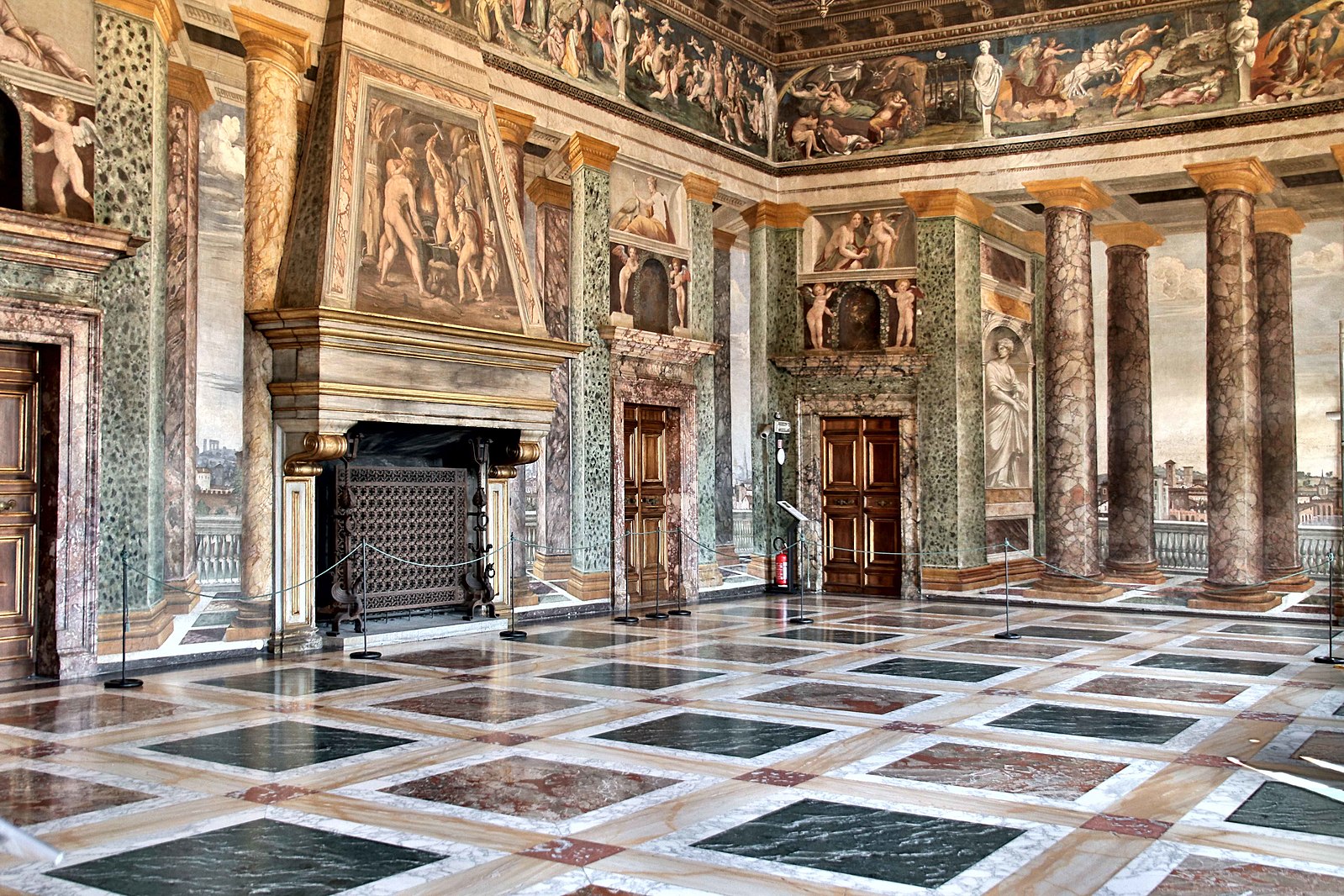
Villa Farnesina
Go to the Villa Giulia, instead of the Galleria Borghese
The Villa Giulia gets less attention than the Galleria Borghese, even though it too is situated within the same Borghese gardens. While the Galleria is famous for its collection of Bernini sculptures and other Renaissance and Baroque works, the Villa Giulia is home to the National Etruscan Museum—and Etruscan art is a fascinating way to jump even farther back into Italy’s history than ancient Rome.
The Villa Giulia, once a country retreat for Pope Julius III, showcases a range of Etruscan artworks—including the well known “Sarcophagus of the Spouses”—that offers a generous glimpse into their people and culture. Besides the collection inside, the Villa’s exterior courtyard and garden are quite pleasant for a passeggiata, decorated with fountains, statues, and classical mosaics.
The Villa Giulia is open 8:30 AM – 7:30 PM (last entry 6:30 PM), Tuesday through Sunday; see the website for the most up-to-date information. Free entry on the first Sunday of the month.
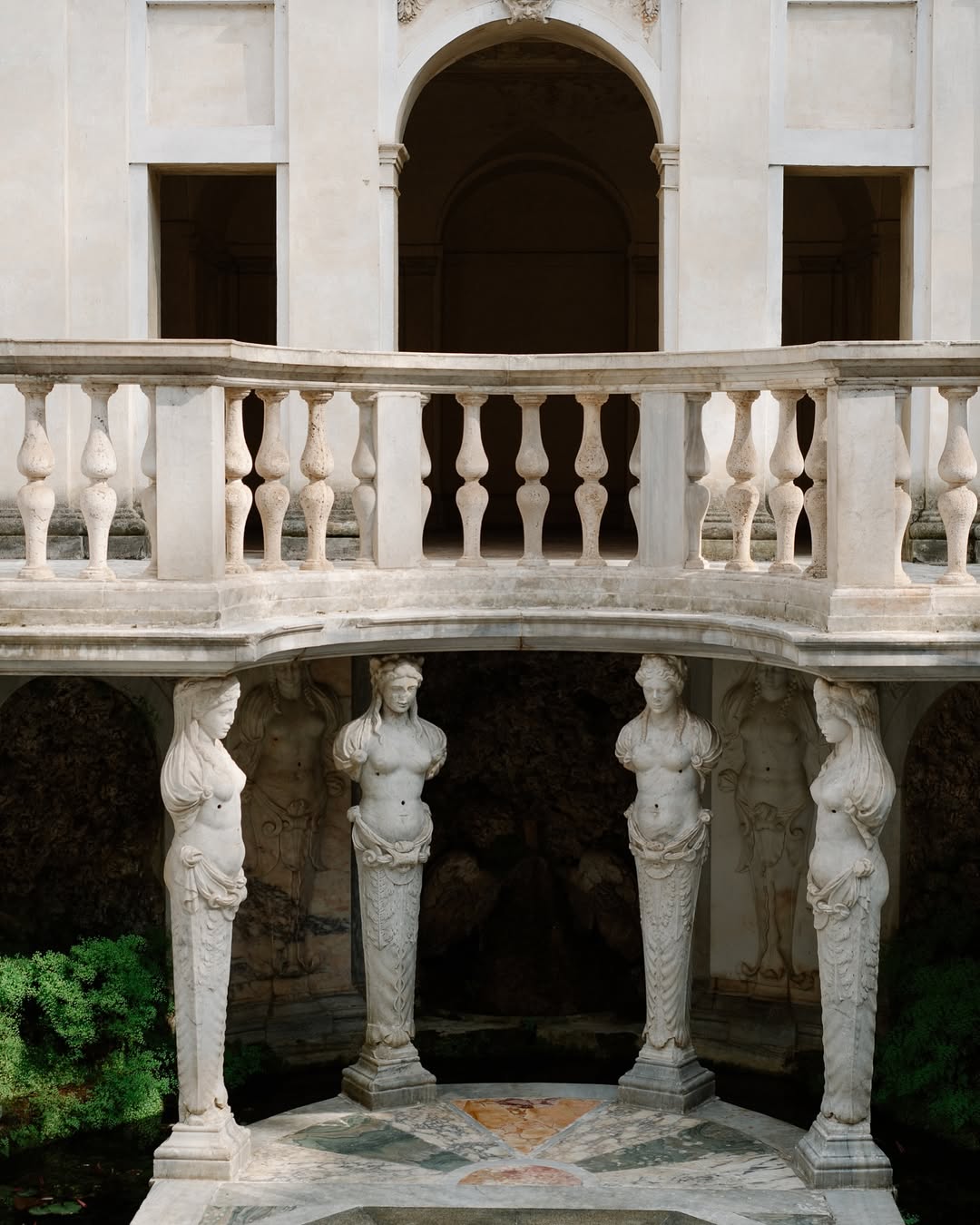
Villa Giulia; Courtesy of @museoetruscovillagiulia
Go to the Villa Doria Pamphilj Gardens, instead of the Borghese Gardens
Like the Galleria Borghese, and in part because of it, the Borghese Gardens tend to be swarmed during most seasons. But if it’s a beautiful public park you’re after, head instead to the gardens of Villa Doria Pamphilj, also a residence from the 17th century. Reachable after a healthy hike up the Monteverde hill (stopping at the Fontana dell’Acqua Paola on the way up or down—see more below), this park is much more serene, with sprawling green grounds to hang, picnic, and catch your breath from all the sightseeing. If you venture far enough into Doria Pamphilij, it seems like you’re far away from the city in the Lazian countryside—a feeling of peace and quiet that the Borghese just can’t provide.
And of course, it wouldn’t be a Roman neighborhood without a visible ancient site: on the edge of this park, you can visit the Catacombs of San Pancrazio. These Catacombs were built here between the 4th and 5th centuries and house the bones of Pancras from Phrygia, a martyr who was beheaded at only 14 in 304 AD. (Catacombs are, as a rule, not crowded per se—there’s only so many people allowed on each guided tour due to the confines of the space—but most visitors seeking them out tend to go the ones in the Via Appia Antica rather than up here.)
The Villa Doria Pamphilj park is open from 7 AM every day. Closing times vary depending on the season; see the website for details. The villa itself is closed to the public.
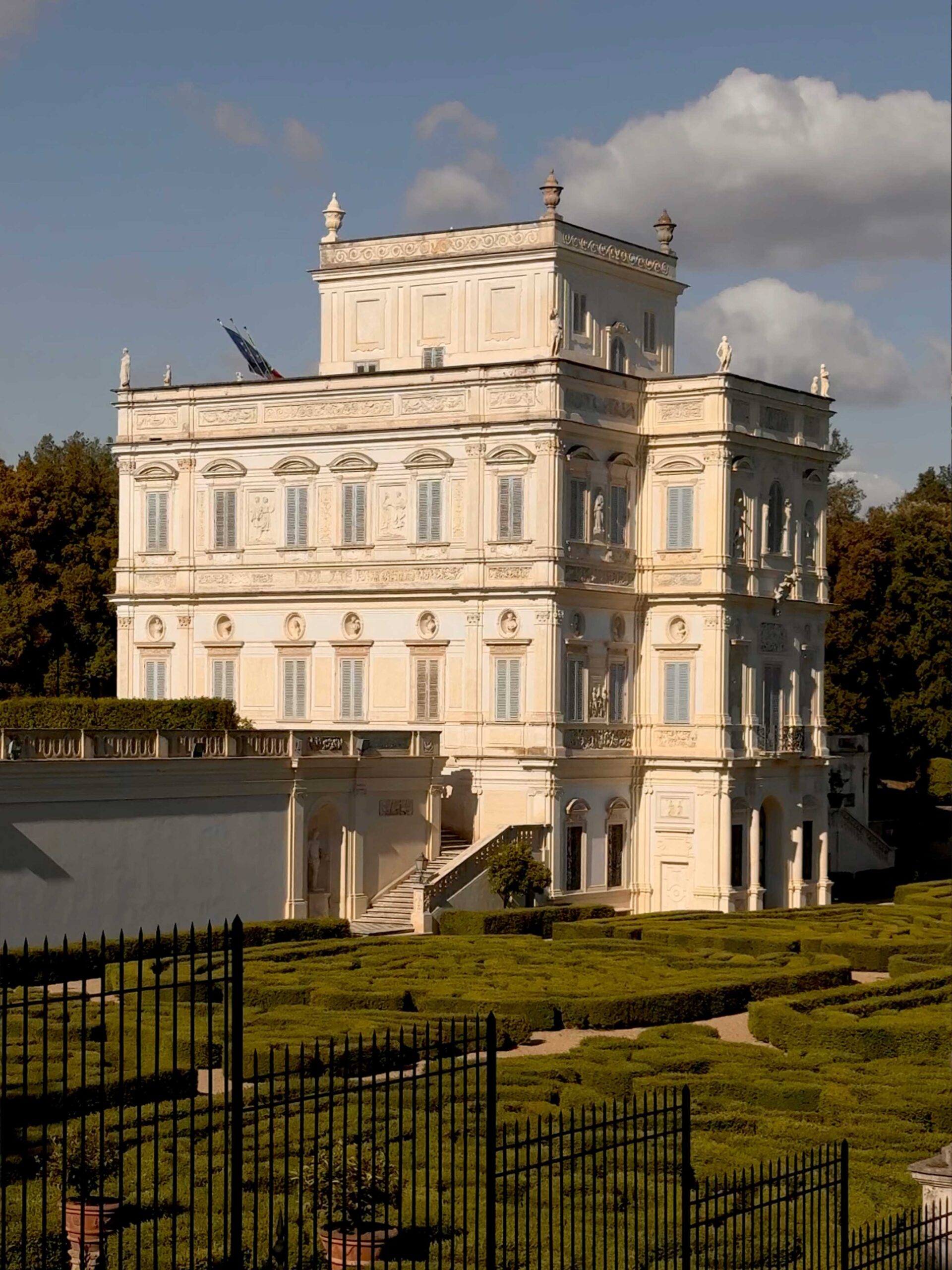
Villa Doria Pamphilj; Photo by Matteo Capirola
Go to the Fontana dell’Acqua Paola in Gianicolo, instead of the Trevi Fountain
The Trevi Fountain is rarely a pleasant experience unless you’re planning to go in the true middle of the night or before dawn. More power to you if you can handle that, but for the humane hours of the day, the Fontana dell’Acqua Paola is another beautiful and monumental fountain that offers the same aquatic and architectural drama, if less sculptural decoration. Overlooking Trastevere on the way up the Janiculum Hill, it’s even become a bit of a Roman icon in its own right—it makes a notable appearance in the opening scene of the recent cult-favorite film La Grande Bellezza (2013). The Fontana dell’Acqua Paola was built in the early 17th century to commemorate the reopening of a major ancient aqueduct; now, the street-meets-piazza that it opens onto is a popular (but not overcrowded) place for sunset views or simply taking a breath in the middle of your walk up the hill—though not necessarily for washing off, as the local Roman does in La Grande Bellezza.
You can reach the fountain by walking (or driving) up Via Garibaldi from the western side of Trastevere, between Via di Porta San Pacrazio and Via Giacomo Medici (be advised that walking involves a somewhat steep incline).
For even more fountain and garden drama, make the trip out of the city to Tivoli to visit the Villa d’Este—one of the absolute pinnacles of early modern fountain design, with waterworks across numerous gorgeous gardens.
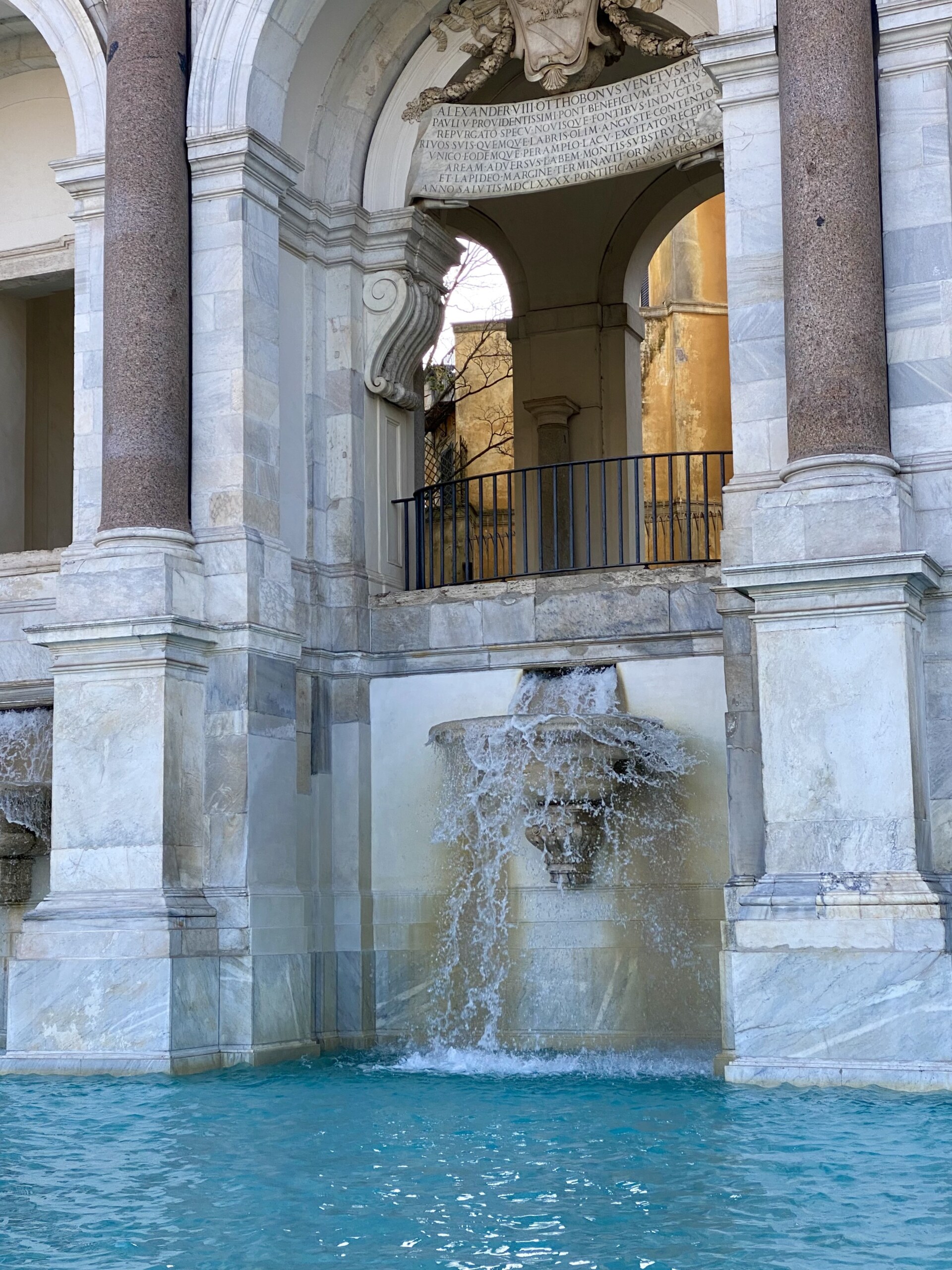
Fontana dell'Acqua Paola
Go to the Orange Garden in the morning, not at sunset
The Giardino degli Aranci (officially named the Parco Savello) at the top of Aventine Hill is seemingly the place to be for sunset on Rome’s many sunny days. We can blame several social media networks for that, while also admitting that the garden isn’t exactly overrated. Perched above the Tiber with a sweeping view of the city and its many domes, it’s certainly not a bad place to observe Rome’s many eras. Italian pine trees line the central pathway of the garden with their Dr. Seuss-like silhouettes, dramatically framing the dome of St. Peter’s—a better view than you’ll get from standing inside the crowded Vatican piazza, too. (While we’re on the subject, please know that the view through “the” keyhole down the street at the Priory of the Knights of Malta, with a line almost as long as the Pantheon’s in the high season, is practically the same and not majorly worthwhile—just go straight to the garden.)
And somehow—no one goes to the Orange Garden in the morning. Apparently the temptation of a sunset view beats the appeal of a practically empty paradise to start your day on a high note. But the garden opens early, so bring coffee and a cornetto (or the Roman second breakfast of pizza rossa) on your walk up the hill and enjoy them once you’re settled on a bench in front of the orange trees. Afterward, make sure to go into Santa Sabina, the impressive 5th-century church adjacent to the garden.
The Orange Garden opens every day at 7 AM and closes at different times depending on the season: 9 PM (April to August), 8 PM (March and September), and 6 PM (October to February).
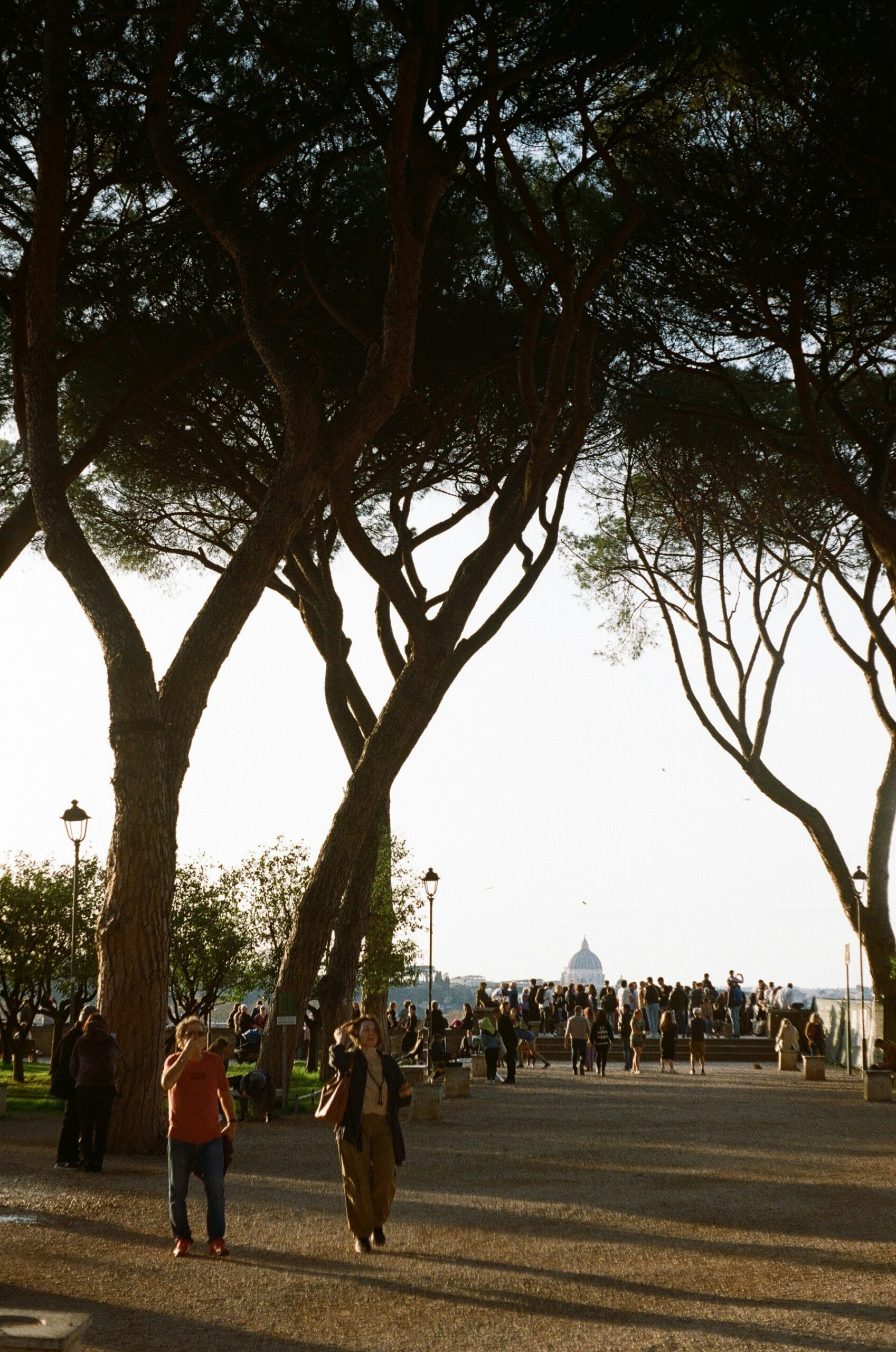
Giardino degli Aranci
Bonus: Go to the Parco degli Acquedotti
After so much city sight-seeing, and many feasts, sometimes the best thing to do is lie down in a grassy park. So, for a truly local and relaxing setting with a not-so-casual backdrop of Roman history (and a really great sunset, if you’re in the market), it’s worth going a bit out of town to the Parco degli Acquedotti, situated just past the residential neighborhoods of Tuscolana and Centocelle. The area became a public park in 1965 and is home to surviving sections of six ancient Roman aqueducts, whose sky-high, nearly two-thousand-year-old remains stand as a continuous reminder of just how long Rome has been making our jaws drop. It’s special at any time of day, but unrivaled when the sun starts to dip, sending its orange light streaming through the dramatic frames of the ancient arches.
To reach the Parco degli Acquedotti, take metro A to the Giulio Agricola stop (about a 20-minute ride from Termini), and walk about 10 minutes south on the Viale Giulio Agricola to the park entrance by the church of San Policarpo.

Parco degli Acquedotti
